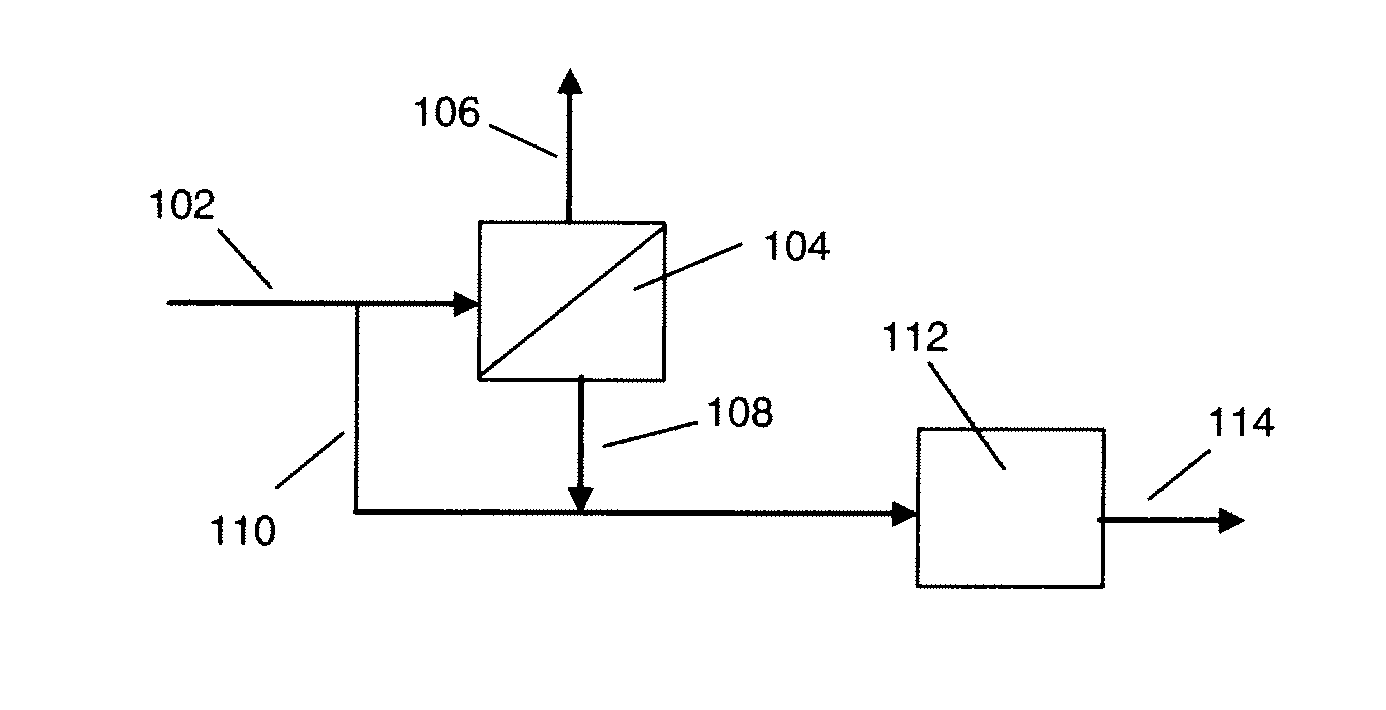Membrane separation processes and systems for enhanced permeant recovery
a technology of permeant recovery and membrane separation, applied in the field of membrane separation processes and systems, can solve the problems of limited commercial success of membrane separation in displacing alternative separation unit operations, large capital cost of membranes for a given recovery of permeant, and extremely large membrane surface areas that would have to be provided, so as to improve the economic viability of membranes, facilitate flexibility, and maintain the effect of permeation recovery
- Summary
- Abstract
- Description
- Claims
- Application Information
AI Technical Summary
Benefits of technology
Problems solved by technology
Method used
Image
Examples
Embodiment Construction
[0022]The processes and systems of this invention can be used with various fluid feeds, especially those in refinery and chemical facilities, where purity of the permeant in the permeate fraction is not critical. In general, such applications will involve a recycle reaction process where unreacted component is recycled to the reaction zone or a pretreatment process where the fluid feeds are enriched or depleted in a component to facilitate a reaction or another separation process.
[0023]Exemplary applications include the separation of normal paraffins from branched paraffins and cyclic paraffins and aromatics for recycle to isomerization reactors; separation of olefins from paraffins or oxygenated compounds such as alcohols, ethers, carboxylic acids and esters or halogen-containing compounds such as alkylchlorides, and the like; separation of normal paraffins from naphtha feedstocks to provide enhanced feeds for reforming and for cracking; separation of benzene and aliphatics from al...
PUM
| Property | Measurement | Unit |
|---|---|---|
| mass percent | aaaaa | aaaaa |
| mass percent | aaaaa | aaaaa |
| mass percent | aaaaa | aaaaa |
Abstract
Description
Claims
Application Information
 Login to View More
Login to View More - R&D
- Intellectual Property
- Life Sciences
- Materials
- Tech Scout
- Unparalleled Data Quality
- Higher Quality Content
- 60% Fewer Hallucinations
Browse by: Latest US Patents, China's latest patents, Technical Efficacy Thesaurus, Application Domain, Technology Topic, Popular Technical Reports.
© 2025 PatSnap. All rights reserved.Legal|Privacy policy|Modern Slavery Act Transparency Statement|Sitemap|About US| Contact US: help@patsnap.com


